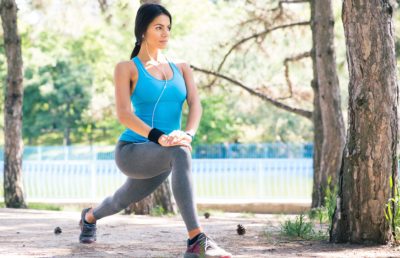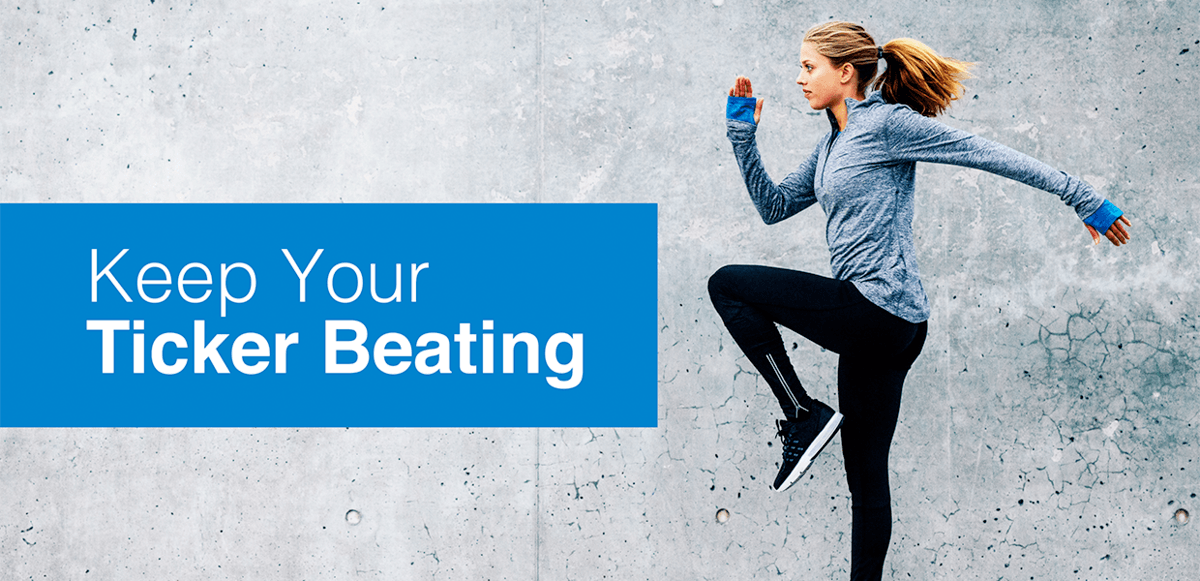Keep Your Ticker Beating with Heart Healthy Exercises
February is near and dear to our hearts at USANA and in the U.S. because it’s heart health month.
Cardiovascular disease—a catch-all term for all of the diseases affecting the heart and blood vessels—is the number one leading cause of mortality globally according the World Health Organization.
The good news about cardiovascular disease is that 80 percent of cardiac and stroke events may be prevented with education and action.
High blood pressure, high LDL cholesterol (the bad cholesterol), and smoking are key heart disease risk factors. Several other medical conditions and lifestyle choices can also put people at a higher risk for heart disease, including:
- diabetes
- being overweight and obesity
- poor diet
- physical inactivity
- excessive alcohol use
The recommendations are to exercise 30 minutes most days of the week for a total of 150 minutes per week (from the American College of Sports Medicine, and the American Heart Association). While 150 minutes per week sounds strange, it is easily broken down into about 30 minutes of exercise most days of the week. In fact, according to the American Heart Association’s 2013 exercise standards, “Exercise can be viewed as a preventive medical treatment, ‘like a pill’ that should be taken on an almost daily basis.”

If you have been off the wagon with exercise lately and you are wondering where to start here are some suggestions to back into the swing of things.
Walking by far is the most popular form of exercise. It is cheap, easy on your joints, and you can walk basically anywhere.
When you are walking it is important to walk at a fairly constant pace. While walking at the grocery store gets you more steps for your step competition, you tend to meander, stop, and look at something, and then walk again.
It is important that you designate 30 minutes to moderate walking to allow your heart to really work and to work for a lengthy period of time.
Another great way to exercise is swimming. The Centers for Disease Control says it is one of the best aerobic exercises for heart health. It puts very little stress on your joints and muscles, making it easier for people to exercise for longer without an increased effort.
Your heart rate also doesn’t spike as high when swimming because you are horizontal instead of vertical. This makes it easier for your heart to pump blood throughout your body.
Furthermore, when exercising in cool water, your body doesn’t have to work to keep you cool. This means that if you could only run for 15 minutes you probably could swim much longer. And when exercising for heart health the more the better! It also has been reported that people enjoy water-based exercise more than exercising on land.
Biking is also a low impact exercise mode. You can join a spin class, ride a road bike outside, or climb trails on your mountain bike. To avoid injuries and feel comfortable on your bike, it is important to set you seat height appropriately.
The heel-to-pedal method involves sitting on the bike to adjust the seat. It’s easy on a stationary bike, but if on a road bicycle, hold on to a chair or table, or just lean against a wall. Place your heel on the pedal and pedal backwards to reach the six o’clock position. Your knee should be completely straight. If your knee is still bent you need to increase the height, adjusting in small increments each time, and if your heel loses contact with the pedal then you need to lower the saddle.

Let loose and dance! The recommended heart rate is between 120-135 beats per minute to attain good aerobic exercise.
A study in Circulation: Heart Failure found that people with cardiac conditions who danced for just 20 minutes three times a week saw their heart health improve significantly more than those who stuck to traditional cardio workouts (Hamacher et. al., 2015).
Dancing can also preserve your motor skills and perceptual abilities Dancing can include Zumba, High Fitness, or at home.
Tai Chi is great for both mind and body. It combines deep breathing, meditation, and rhythmic body movements. A research study published in the American Journal of Health Promotion stated that they found that, “Tai Chi alleviated anxiety and decreased the risks for cardiovascular disease, including hypertension, BMI, and waist circumference” (Mei-Ying, et. al., 2013).
Now there is no excuses. You’ve got the information. Give it 30 minutes. Walk, swim, bike or dance. Get moving and protect your heart!
| *These statements have not been evaluated by the Food and Drug Administration. This product is not intended to diagnose, treat, cure, or prevent any disease. |
|---|
References:
ACSM | News Releases. (n.d.). Retrieved February 02, 2017, from http://www.acsm.org/about-acsm/media-room/news-releases/2011/08/01/acsm-issues-new-recommendations-on-quantity-and-quality-of-exercise
American Heart Association. (n.d.). Retrieved February 01, 2017, from http://www.heart.org/HEARTORG/
Cardiovascular diseases (CVDs). (2016, September). Retrieved February 01, 2017, from http://www.who.int/mediacentre/factsheets/fs317/en/
Hamacher, D., Hamacher, D., Rehfeld, K., Hökelmann, A., & Schega, L. (2015). The Effect of a Six-Month Dancing Program on Motor-Cognitive Dual-Task Performance in Older Adults. Journal Of Aging & Physical Activity, 23(4), 647-652.
Health Benefits of Water-based Exercise. (2016, May 04). Retrieved February 01, 2017, from https://www.cdc.gov/healthywater/swimming/swimmers/health_benefits_water_exercise.html
Mei-Ying, C., Jennifer Yeh, S., Mei-Chi, C., Tsung-Mao, W., & Tse-Hung, H. (2013). Associations Between Tai Chi Chung Program, Anxiety, and Cardiovascular Risk Factors. American Journal Of Health Promotion, 28(1), 16-22.


Leave a Reply
Want to join the discussion?Feel free to contribute!